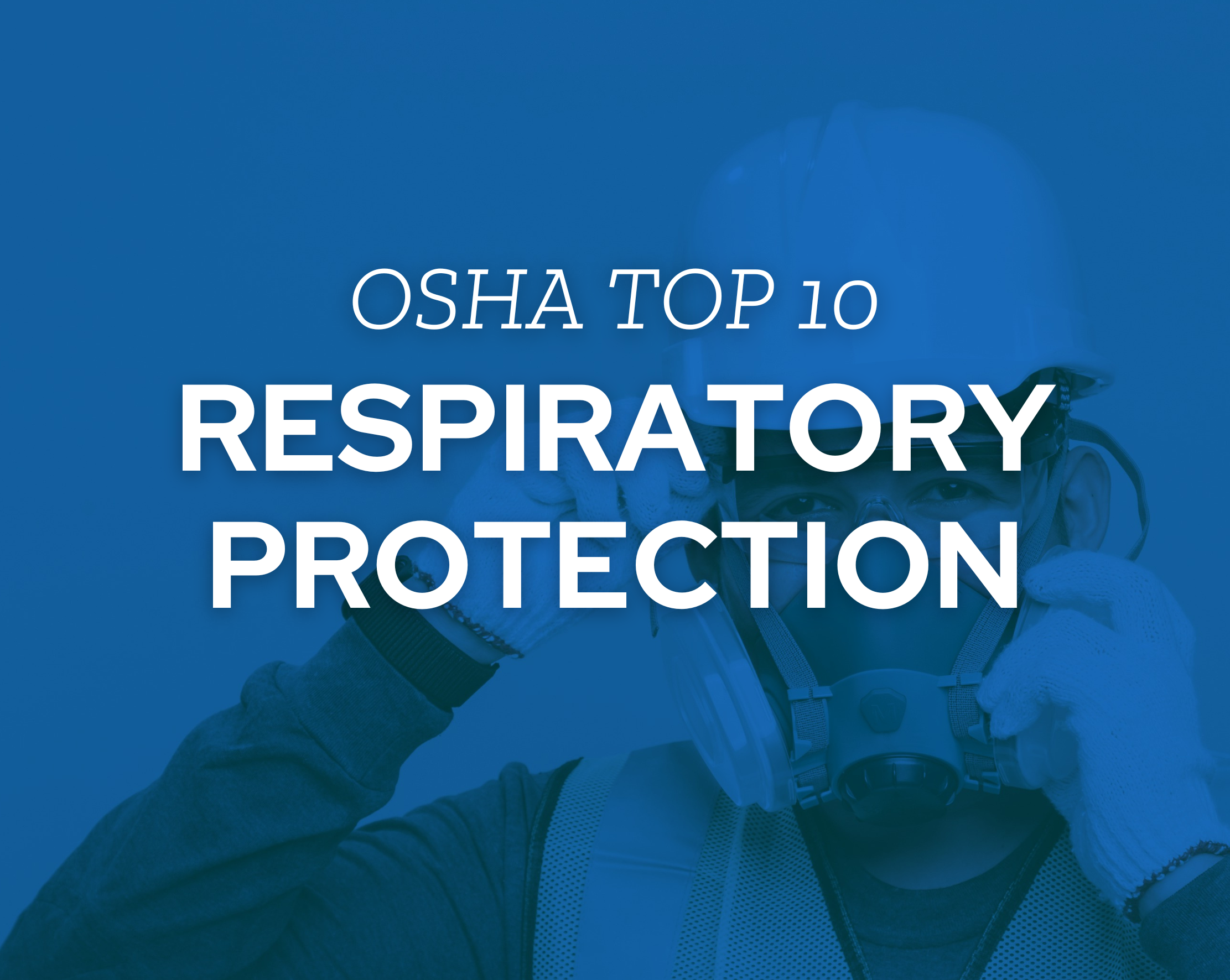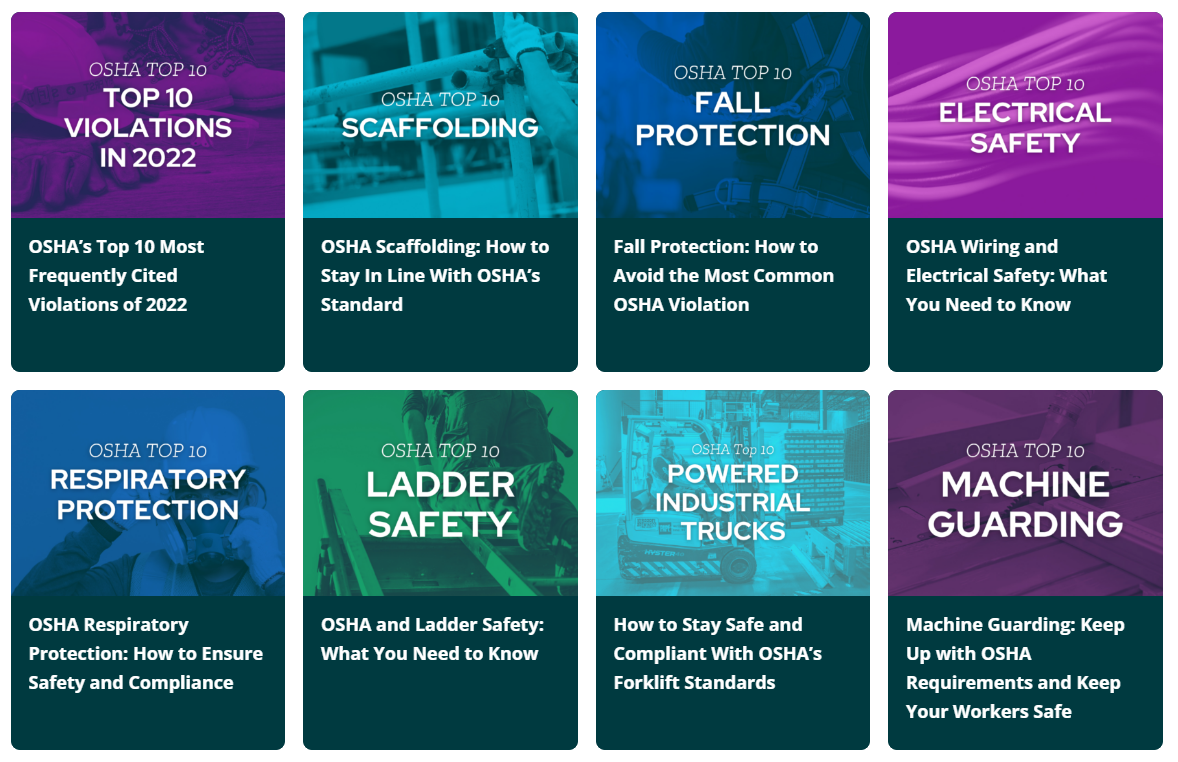OSHA Respiratory Protection: How to Ensure Safety and Compliance
OSHA Respiratory Protection Standard: What It Is
OSHA definition:
“In the control of those occupational diseases caused by breathing air contaminated with harmful dusts, fogs, fumes, mists, gases, smokes, sprays, or vapors, the primary objective shall be to prevent atmospheric contamination. This shall be accomplished as far as feasible by accepted engineering control measures (for example, enclosure or confinement of the operation, general and local ventilation, and substitution of less toxic materials). When effective engineering controls are not feasible, or while they are being instituted, appropriate respirators shall be used pursuant to this section.” (Source)
Simple definition:
Not all air is safe to breathe. The oxygen in a certain environment may contain hazardous fumes, dust, or other contaminants.
Common airborne contaminants include the following:
- particulate matter (e.g. silica dust)
- smoke
- gases
- mists
- vapors
- aerosols
These and other contaminants can cause short- and long-term health problems, such as…
- asthma
- bronchitis
- emphysema
- impaired thinking
- decreased lung capacity
- loss of consciousness
- cancer
OSHA’s respiratory protection standard outlines how organizations should minimize worker exposure to hazardous air.
First, the standard requires employers to assess and minimize airborne hazards if possible. But if controlling the environment isn’t possible or doesn’t provide adequate protection, employers must provide their workers with respiratory devices (usually called “respirators”). The standard lays out which respirators to use—and how to use those respirators—in various situations, along with maintenance, inspection, and medical follow-up procedures.
Which Kind of Respirator Is Required?
In general, respirators fall into two categories: air-purifying and atmosphere-supplying. According to OSHA, the former “use filters or sorbents to remove harmful substances from the air.” Such respirators “range from simple disposable masks to sophisticated devices,” but “do not supply oxygen and must not be used in oxygen-deficient atmospheres or in other atmospheres that are immediately dangerous to life or health.”
Atmosphere-supplying respirators, on the other hand, “are designed to provide breathable air from a clean air source other than the surrounding contaminated work atmosphere.” This category includes supplied-air respirators (SARs) and self-contained breathing apparatus (SCBA) units.
These respirators are not interchangeable. Air-purifying respirators are best used on a short-term basis, while atmosphere-supplying respirators can be worn for extended periods of time. In either case, the respirator must fit properly and “must not impair the worker’s ability to see, hear, communicate, and move as necessary to perform the job safely.”
Why Respiratory Protection Violations Happen
Many violations of OSHA’s respiratory protection standard happen when organizations fail to establish respiratory protection programs. If there are no written procedures in place, the organization is in trouble.
Some organizations fail to perform required fit testing. They don’t go through the trouble of making sure respirators fit snugly on workers’ faces, without interfering with vision, hearing, or communication.
Another common reason for OSHA citations are inadequate medical evaluations. Too many organizations neglect to provide their workers with evaluations by a physician or other licensed health care professional. Keep in mind that some workers may require follow-up evaluations based on their initial results, after reporting new symptoms, when working conditions change, or under other circumstances.
Many other violations occur due to inadequate training. Organizations can’t afford to take respiratory protection for granted or assume that workers know the proper procedures for respirator use.
What You Stand to Lose When Respiratory Protection Violations Happen
Direct costs: OSHA penalties can exceed $15,000 per violation—and as much per day for every day the issue hasn’t been fixed by OSHA’s deadline. The fine for a willful or repeated violation can be 10 times as much.
Indirect costs:
- workers’ compensation claims from workers exposed to toxic air
- lost productivity due to illnesses and injuries caused by airborne contaminants
- legal and compliance fees
- decreased morale
- negative publicity and reputational damage
Signs You’re at Risk of a Respiratory Protection Violation
Construction workers, miners, painters, fabricators, and auto mechanics are exposed to higher-than-average levels of contaminated air.
Respirators need ongoing maintenance and testing. When a device is no longer operational or safe to use, it should be replaced.
The risks related to toxic air exposure increase with every hour on the job. Your workers should be taking breaks or rotating out frequently.
Natural disasters, such as recent wildfires, can bring ash and smoke into the air.
Anyone who could be exposed to contaminated air needs to know how to use a respirator.
How to Avoid a Respiratory Protection Violation: Your Prevention Checklist
A hazardous atmosphere is one where there’s insufficient oxygen; harmful levels of chemical, biological, or radiological contaminants; and/or known, “reasonably foreseeable,” or unknown emergencies related to toxic air exposure. If any of those describe your workplace, OSHA’s respiratory protection standards may apply to your workplace. To find out, consider whether you have sufficient engineering or administrative controls in place to prevent airborne illness. If you don’t have controls in place, the respiratory protection standards apply and your employees must use respirators.
You need written procedures for respirator selection, medical evaluations, fit testing, routine and emergency respirator use, as well as maintenance, storage, cleaning, repair, and much more (PDF).
A physician or other licensed healthcare professional (PLHCP) must be available to perform medical evaluations of employees exposed to contaminated air. Evaluations should obtain the information laid out in OSHA’s medical questionnaire. Employees should follow up with the PLHCP if the questionnaire or medical provider determines it necessary. The medical evaluations must be administered confidentially during normal work hours, and in a manner that is understandable to employees. Employees should have the opportunity to discuss their results with the PLHCP. The PLHCP should have all necessary information to make a recommendation on employee respirator use.
Respirators must be air-sealed to the employee’s face prior to exposure. Keep in mind that beards and facial hair may interfere with safe respirator use. A respirator should not obstruct eyesight or hearing, or get in the way of other protective equipment. Employees must be able to demonstrate knowledge of respirator function, use, maintenance, inspection, storage, emergency practices, and more. Employees should also be able to recognize the signs of a medical emergency or condition that could interfere with respirator use.
Be sure your respirators are NIOSH-certified and effectively guard against the contaminants present on the specific worksite. Respirators should also be available in different sizes and models for different employee needs. Every respirator needs to be clean and in good working order. Respirators should be provided at no cost to employees.
Employees must undergo respirator fit testing (of the same make/model they’ll be using) before real-world use. Respirators should be inspected before and after each use.
You can’t use the same equipment indefinitely. Many respirators are equipped with end-of-service-life indicators (ESLIs) certified by NIOSH. An ESLI tells you how long a cartridge or respirator can be exposed to certain contaminants before it needs to be replaced. Be sure to replace any cartridges or respirators before they expire. If a respirator does not have a NIOSH-supplied ESLI, it’s your responsibility to replace them on the proper schedule. You can do this by conducting experimental tests, using a math model, or going with the manufacturer’s recommendation. Whatever method you choose, you’ll need to be able to explain your change-out schedule, what data you’re using, and why you rely on that data.
Don’t just write it once and put it on the shelf to gather dust. Evaluate it on a regular basis to make sure nothing falls through the cracks.
Be sure to retain records of medical evaluations, fit testing records, and a copy of the current respiratory protection program. Employees and OSHA should have access to these records.
You Don’t Have to Manage Your OSHA Requirements Alone
Have questions? Looking for more detailed OSHA compliance guidance?
KPA is here to help.
To truly protect your workforce and bottom line, you’ll need in-depth information—and not just about OSHA’s top 10, but every potential hazard that exists in your organization. You’ll also need to conduct a thorough evaluation of your facilities to identify current gaps and risk areas.
KPA’s unique combination of software, training, and consulting services can provide the coverage your people and your organization need. For more information and guidance about preventing a respiratory protection violation, please contact us.


